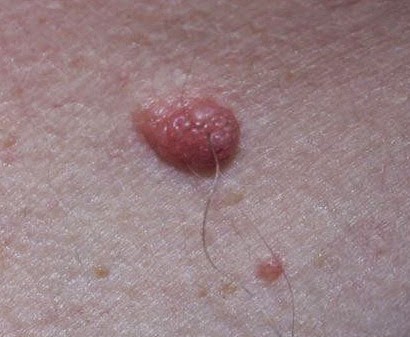A skin mole is a round or oval-shaped growth on the skin. The color of a skin mole can vary from pink, red, brown and black.
Some skin moles are raised while others are quite flat. They occur in several different layers of the skin and are medically referred to as nevi. Skin moles can occur anywhere on the body either alone or sometimes even in a group. However they are more commonly found on the trunk of the body, face and arms.
Most skin moles appear during childhood or adolescence although some may appear later in life. The large majority of the individuals have all the skin moles when they are born. However some of these growths may not be visible. The average individual has approximately from 10 to 50 of them on the body.
Most skin moles change with the passage of time. Some may change color or are raised from the skin or both. They have a tendency to develop hair in them. However some remain the same and do not change at all. Further more some may disappear completely.
There are persons that consider a skin mole to be a "beauty mark." Some refer to it as an "angel kiss". However some skin moles can be quite ugly in appearance. In fact, some can become raised and contain hair, which is more in line with the image of the stereotypical "green-skinned Halloween witch".
When individuals have passed teenage years, they most likely have developed all of the skin moles they are going to get. However, new growths may develop and these new growths should be evaluated by a qualified physician. Some people, after passing the age of 70, find their growths to suddenly disappear. This is actually quite common as we age.
In most scenarios a skin mole are completely harmless. But if it is changing, growing, or becoming raised when it had not been previously, you should seek medical attention.
A skin mole occurs because of a buildup of pigment in the skin which is the same type of cell that gives you your complexion and skin color.
From a purely biological standpoint, there is no function to these clusters of pigmented cells. Many people find that they are genetically predisposed to these type of growths, especially larger ones.
Pregnancy, sun exposure, or simple hormonal changes can affect the color, size, shape, and quantity of your skin mole. Sun exposure is also found to increase their quantity.
There is no real way to prevent skin moles since they do seem to be a genetic trait. Reducing sun exposure or protecting yourself from the sun can help, but there is no 100% skin mole prevention method.






















